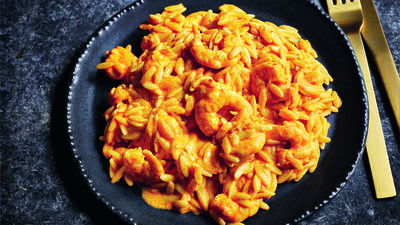
The traditional recipe for this chicken was made by heating rock salt in a wok, then burying the chicken in the hot salt and cooking on the stove, as most homes in China did not have ovens. The modern convenience of having an oven makes it much easier to control the cooking temperature. Oven-roasting produces a skin that is crisp, golden brown, and mellow in flavor, with exceptionally juicy and flavorful meat. Mei Kuei Lu Chiew tastes a little like grappa. It’s hard to believe 2 tablespoons makes much of a difference, but the liquor contributes fragrance and sweetness to the chicken. If unavailable, grappa and vodka are adequate substitutes.
Ingredients
One 4-pound broiler-fryer chicken
2 teaspoons plus 1 tablespoon salt
2 tablespoons Mei Kuei Lu Chiew liquor
1/4 cup finely minced shallots
2 tablespoons finely minced ginger
1 tablespoon thin soy sauce
1 1/2 teaspoons honey
1 teaspoon sesame oil
Instructions
Remove any fat pockets from the chicken and rub the chicken all over with 2 teaspoons salt. Rinse the chicken under cold water and place on a rack. Pat the cavity and skin dry with paper towels. Air-dry at least 1 hour in a cool and breezy room. When dry, rub the skin of the chicken with liquor and allow to sit for 15 minutes.
Preheat the oven to 425 degrees. In a small bowl, combine the shallots, ginger, remaining 1 tablespoon salt, soy sauce, honey, and sesame oil. Stir until the honey is dissolved and the mixture is well combined. Smear about 3 tablespoons of the mixture into the cavity and the remainder all over the chicken skin.
Place the chicken breast-side up on a rack set in a roasting pan lined with heavy-duty aluminum foil and filled with water to a depth of 1/4 inch. Roast 30 minutes, or until chicken is just beginning to turn golden. Using several thicknesses of paper towels to grip the chicken, carefully turn the chicken breast-side down, and roast an additional 20 minutes. Again using paper towels, turn the chicken breast-side up. Roast a final 5 to 10 minutes, or until a meat thermometer registers 170 degrees when inserted at the meatiest point of the thigh but not touching the bone, and the skin is a rich golden brown color.
Allow the chicken to rest for 15 minutes. With a meat cleaver, chop the chicken through the bone, into bite-size pieces (or disjoint into serving pieces), reserving any chicken juices. Serve immediately or at room temperature with any pan juices.
Adapted from The Wisdom of the Chinese Kitchen, by Grace Young.
Before you go...
Each week, The Splendid Table brings you stories that expand your world view, inspire you to try something new, and show how food connects us all. We rely on your generous support. For as little as $5 a month, you can have a lasting impact on The Splendid Table. And, when you donate, you’ll join a community of like-minded individuals who love good food, good conversation, and kitchen companionship. Show your love for The Splendid Table with a gift today.
Thank you for your support.
Donate today for as little as $5.00 a month. Your gift only takes a few minutes and has a lasting impact on The Splendid Table and you'll be welcomed into The Splendid Table Co-op.



